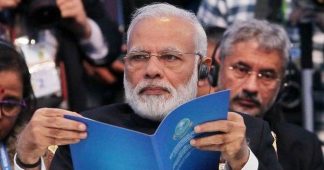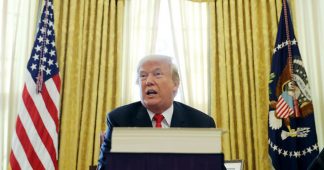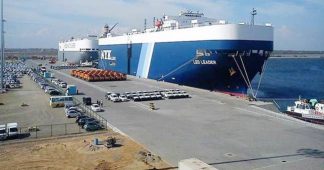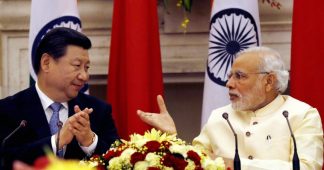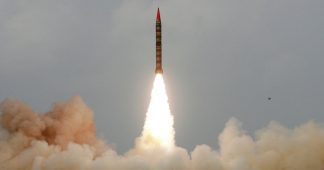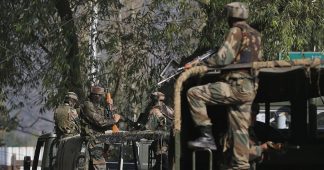Window to the West
January 21, 2018
WHEN in 1960 Mao Zedong sent off General Gengbiao, his second ambassador to Pakistan, he reportedly advised him: “Look after Pakistan; it is China’s window to the West”.
Mao’s depiction may have been as much metaphorical as geographical. During the 1960s, Pakistan was China’s diplomatic window to the West, eventually brokering the normalisation of China-US relations in 1971. Today, the physical facet of Mao’s depiction is becoming a reality in the China-Pakistan Economic Corridor.
Gen Gengbiao, who went on to become China’s defence minister and deputy prime minister, played a vital role in building the China-Pakistan strategic relationship. So did Pakistan’s prime minister Bogra and foreign minister, and later prime minister, Zulfikar Ali Bhutto.
Unfortunately, large swathes of the Pakistani public, especially the youth, are not fully aware of the history, intensity and rationale of the Pakistan-China relationship. Some Western-oriented Pakistanis even question China’s desire for a strong Pakistan.
The Pakistan-China relationship has survived the twists and turns of global politics and domestic changes in both countries because it is based on a strong and lasting alignment of their national interests.
Over the last five decades, Pakistan has boldly defended China’s unity and territorial integrity; worked assiduously to secure China’s legitimate seat in the United Nations; resisted attempts to censure China on human rights and to denigrate its socioeconomic achievements.
For its part, China has and continues to manifest its support for Pakistan in multiple ways.
— In 1965, China moved its troops to its disputed border with India, preventing India from redeploying additional forces to the battlefield against Pakistan;
— In 1971, as India invaded East Pakistan, China defended Pakistan’s territorial integrity and was prepared to respond to Pakistan’s call to intervene militarily but was prevented from doing so by an explicit Soviet nuclear threat;
— In 1972, at Pakistan’s request, China vetoed the admission of Bangladesh into the United Nations until Dhaka and Delhi agreed to release the 90,000 Pakistani prisoners of war;
— China built Pakistan’s heavy industrial complex at Taxila and other manufacturing capabilities virtually on a grant basis;
— Despite US pressure and sanctions, China supplied Pakistan with its first ballistic missiles and enabled it to develop its now formidable missile capabilities;
— China remains the only country willing to sell civilian nuclear reactors to Pakistan and has blocked India’s single entry into the Nuclear Suppliers’ Group;
— For over three decades, new Chinese military equipment was made available to Pakistan almost simultaneously with its induction in the PLA;
— China was the only country to agree to the co-production of advanced military aircraft and other weapons systems with Pakistan;
— As China’s economic fortunes improved, it quietly and repeatedly extended financial support (loans, bank deposits, grants) to enable Pakistan to meet economic emergencies and bolster its failing finances;
— China decided to finance the CPEC projects in Pakistan as the first leg of its ambitious Belt and Road Initiative. No other country’s companies were prepared to invest or work in Pakistan;
— Finally, as India pursues a global media and diplomatic campaign to ‘isolate’ Pakistan and threatens ‘surgical strikes’ and a ‘limited war’, and as the US exerts pressure on Pakistan to support its failed strategy in Afghanistan and succumb to Indian diktat, it is China, with its veto in the Security Council and influence in major capitals, that stands in the way of negative international decisions and actions against Pakistan.
In the currently unfolding Asian drama, the power relationships in South Asia and adjacent areas will depend on the structure and content of Sino-US, Sino-India and Pakistan-India relations.
The US has designated China as a ‘competitor’ in its recent national security document. President Trump is reportedly ‘frustrated’ by China’s ‘failure’ to persuade or punish North Korea or to reduce the US trade deficit with China. Trade action against China appears to be in the offing. There is revived rhetoric from the Pentagon regarding ‘freedom of navigation’ in the South China Sea. The US endeavours to build alliances around China’s periphery are active.
To dampen the US campaign, China appears to have softened its stance towards the states with which it has maritime disputes in the South China Sea as well as with its main Asian rivals: Japan and India. For instance, in the Donglan (Doklam) stand-off, China allowed New Delhi to save face by not publicising India’s troop withdrawal and it accepted a mention of UN-listed ‘terrorist’ organisations in the BRICS Summit communiqué.
Obviously, Beijing does not want India to enter into an alliance with the US against China. Its tactical diplomacy may serve to defer critical strategic choices. Yet, it is evident that Trump and his generals are on a path towards an open military and strategic confrontation with China. India will, if it has not done so already, embrace a military alliance with the US. India sees itself as China’s ‘natural’ rival; it hungers for China’s great power status; the 1962 defeat still rankles; the border disputes with China have not been resolved. A powerful, anti-Muslim, anti-Chinese, ‘democratic’ America is viewed in Modi’s Delhi as a ‘natural ally’.
In this configuration, Pakistan has no choice but to preserve and intensify its strategic partnership with China. The alternative is submission to a Pax Indo-Americana.
Despite their long and close partnership, Pakistan and China need to undertake urgent and serious efforts to preserve, diversify and intensify their relationship. These efforts include: suppression of terrorist groups, like the ETIM, which threaten China’s security; prevention of externally sponsored disruption of CPEC, especially in Gilgit-Baltistan (CPEC’s ‘chicken neck’) and Balochistan; efficient execution of CPEC projects; focused and generous Chinese support for Pakistan’s economic and industrial modernisation; promotion of peace in Afghanistan to end the US presence there; a joint stance against India’s anti-Pakistan threats; and the rapid modernisation of Pakistan’s armed forces and their strategic and tactical integration with the PLA.
Naturally, both China and Pakistan will continue to hope that America’s present omni-directional belligerence will give way, perhaps in a post-Trump era, to more astute, responsible policies. To that day, Pakistan and China should keep open their window to the West.
* The writer is a former Pakistan ambassador to the UN.
